
There are eight exercises on this CD for speech production, auditory comprehension, conversation stimulation, and auditory/visual attention and memory. The exercises begin at a pre-school level and gradually progress to approximately a sixth-grade reading and spelling level.
Target Audience: Appropriate for precocious Pre-school- Adult individuals that have a fondness for Trains. Exercises will be interesting to Adults with Aphasia, Apraxia, and Dysarthria for speech, language, and literacy practice.
WN24-2
$5.00
Train Time
by LocuTour Multimedia
Information for Professionals:
These exercises are structured to be especially appealing to persons with Autism, PDD, or Asperger Syndrome. The communication deficits related to autism often include auditory and reading comprehension problems and pragmatic language disorders. In a small group setting, the CD can be used to present stimuli and allow the individuals to practice turn taking, appropriate conversation, and topic maintenance. It is possible to use the recording features for feedback and self-monitoring on perseverative responses, inappropriate laughter, swearing, and off task responses. Use of the Sequential presentation option allows the clinician to present the same stimuli each day. As the client progresses, the clinician can increase the variability for responses using the Random option.
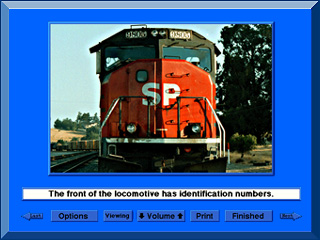
Sights and Sounds Around Me stimulates conversation with 33 videos and 182 train photos with sound effects.
A descriptive sentence can be displayed and used as the starting point for expressive language practice. The sentence can be hidden from view and the pictures used for confrontation naming. Options allow the user to display the words in sequential or random order, display or hide the printed words, and continue or stop after each picture.
The pictures can be used as a launching point for describing the details of visual images such as, color, size, shape, number, smell, taste, sound, perspective, movement, mood, and background. The main idea of the picture can be identified to assist with focusing on relevant stimuli and ignoring irrelevant details. A possible extension activity can be to require the client to tell what could happen next. The clients will need to understand the gestalt of the picture story before being able to make their own extension sentences or infer meaning from the picture. Questions such as, “What was the dog doing?” and, “Why do you think he might be feeling that way?” encourage them to tell brief stories. These can be taped using the Record features and played back to allow some processing of their own speech. You could track topic maintenance, or appropriateness of responses.
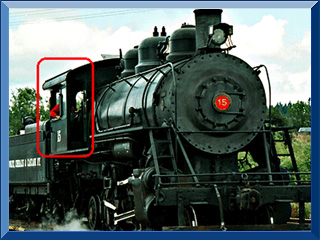
Photo Detail allows the client to practice auditory comprehension at the word, phrase, and sentence levels.
This game is appropriate for children and adults learning the specific vocabulary of trains. Since much of the vocabulary may be unfamiliar, it can also be used as a tool to measure and teach new learning skills and strategies. Listen to one word; two words; a phrase; or a sentence; then scan the photo and find the requested item. This encourages clients to identify parts from a whole picture. There are six levels of increasing grammatical difficulty: labeling; single word; two words; phrase; sentence; and the pronouns he, she, and it. Each level includes 10 photographs with three specific objects to locate in each picture. The client follows the auditory instruction, “Point to.”
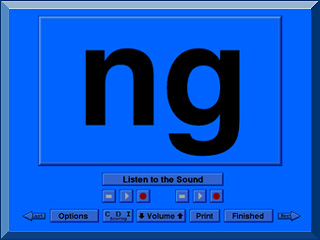
ABC123 allows clients to learn the alphabet, numbers from 1 to 20, and the 43 sounds used in English.
This task is designed to prepare the client for letter, number and word recognition tasks found on other LocuTour titles. This game establishes the “rules” for consonant and vowel sounds utilized in the other games.
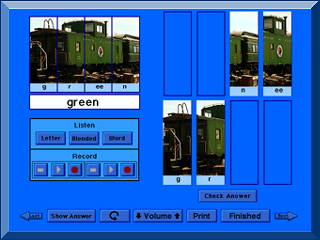
Cut Ups! is a sound segmentation game. The client listens to a word, determines how many sounds are in the word and which sounds are made by each letter, then puts the pieces of the word into the correct order. The clinician teaches the client to integrate the sensory systems for the greatest possible success.
This activity helps with sound segmentation and sound blending skills by sequencing from two to six sounds in a word using a visual and/or auditory model. The client must have the ability to attend to a complex auditory stimulus, analyze the sound segments, and, holding this analysis in memory, perform a motor response. This task involves a degree of conceptual or symbolic functioning. At a basic level, the client can “think it through” one auditory segment at a time while an individual capable of more complex processing can implement his entire analysis before verification.
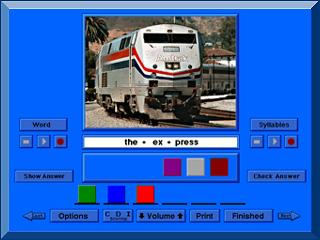
And a One, Two, Three focuses on syllable segmentation. The activity requires clients to indicate the number of syllables for the word or phrase presented with each picture. There are 149 great opportunities to practice.
Clients indicate the number of syllables in a word using small colored squares. They can record the word or syllables and listen to their own speech. Recordings can be scored by the client or clinician as correct, distorted, or incorrect. This task requires an appreciation of sound segments, the ability to link sound and symbol, and the motor ability to represent this information spatially. Accurate ability to process and self-monitor the syllable breaks within words is an auditory processing skill. Self-monitoring can be extended to self-correction of rate and syllable reduction using the stimuli as a tool for speech practice.
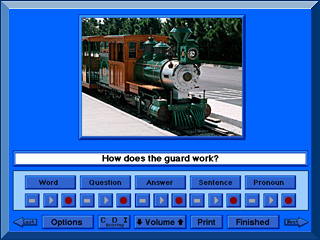
Train Talk models the asking and answering of direct questions. The targeted skills include formulating a main idea and using the concept in sentences. This is an excellent tool to encourage spontaneous speech, conversational skills, and auditory comprehension.
The 128 photos are divided into nine categories: who, what, when, where, why, how, which, other, and mixed. Stimuli include printed and spoken words, questions, answers, sentences, and sentences with a pronoun.
This task requires the ability to attend to a series of complex auditory stimuli, analyze the sound segments, and imitate these sounds in sequence. It combines the skills of auditory processing at the sound, syllable, phrase, and sentence levels with imitative or spontaneous expressive articulatory production. The words chosen for Train Talk help the child or adult learn the specific vocabulary for talking about trains. Shared vocabulary is a building block in concept development. The words were chosen to extend the individual’s knowledge about trains and add to their general fund of knowledge about the world. The question/answer format was chosen to model turn taking and responses to direct questions. The pronoun format facilitates learning to abstract and to understand the relationship between the noun and the pronoun. This is an excellent game for building auditory memory, practicing question formation, responding to questions, and practicing forming sentences with pronouns. Reading can also be practiced by turning the volume off.
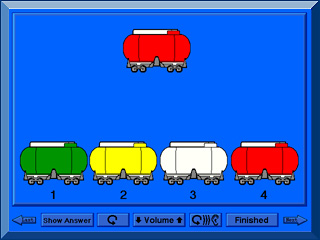
Color or Size develops visual and auditory memory skills as the client matches the item at the top of the screen with one at the bottom. There are three levels of increasing difficulty for size and color matching. A train car stimulus is presented at the top of the screen. The client matches it with the correct one at the bottom according to the cue given.
This task challenges the client to attend to the presented shapes, determine the essential feature (color or size), note the relationship between the presented objects, and then perform a motor act to indicate the results of this process.
The color matching task introduces the concept of color as the essential feature. The ability to discriminate gross color differentiation when the shape and size vary is required. This task draws upon areas V1, V2, and V4 of the occipital cortex as well as areas of the temporal, parietal and frontal cortex.

The size matching task introduces the concept of size as the essential feature. The ability to discriminate largest and smallest when the shape and color vary is required.
This game is appropriate for children developing pre-reading and math skills, children and adults with reading and spelling difficulties, short-term memory problems, or sustained and shifting attention difficulties. Presenting a stimulus and forcing a response will help develop delayed memory skills. Requiring the client to perform a competing task before responding, e.g. count 1-10, introduces a divided attention with delayed visual or auditory memory component.
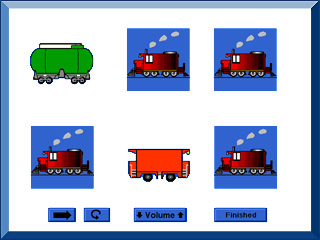
Match Ups! extends auditory and visual memory for objects and sounds with very easy to very hard levels (infinite number of different screens).
This is a task of psychomotor performance relatively unaffected by intellectual ability, long-term memory functioning, or previous learning. It requires motor persistence; sustained visual attention and scanning; visuomotor coordination; and the ability to encode and recall the symbols. This game is appropriate for individuals with auditory/visual short-term memory deficits, as well as verbal rehearsal and confrontation naming problems. Rapid single word naming of the items is an excellent word retrieval task.